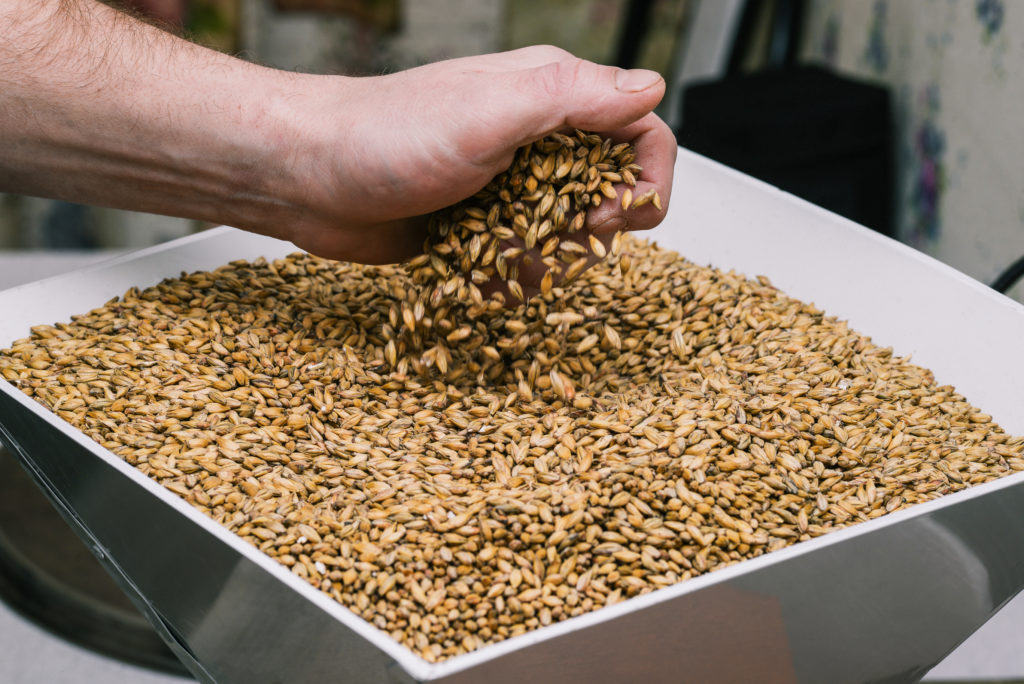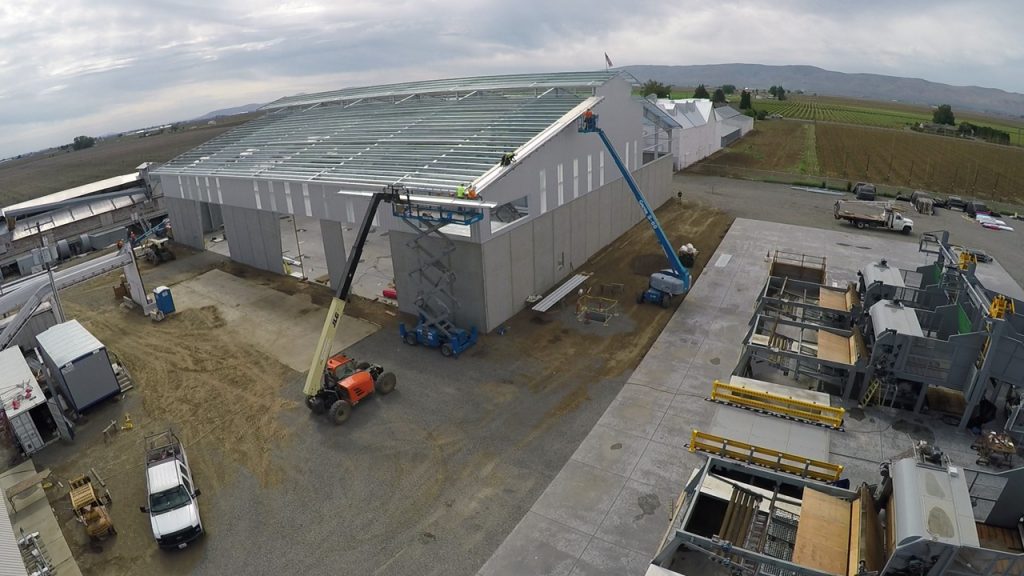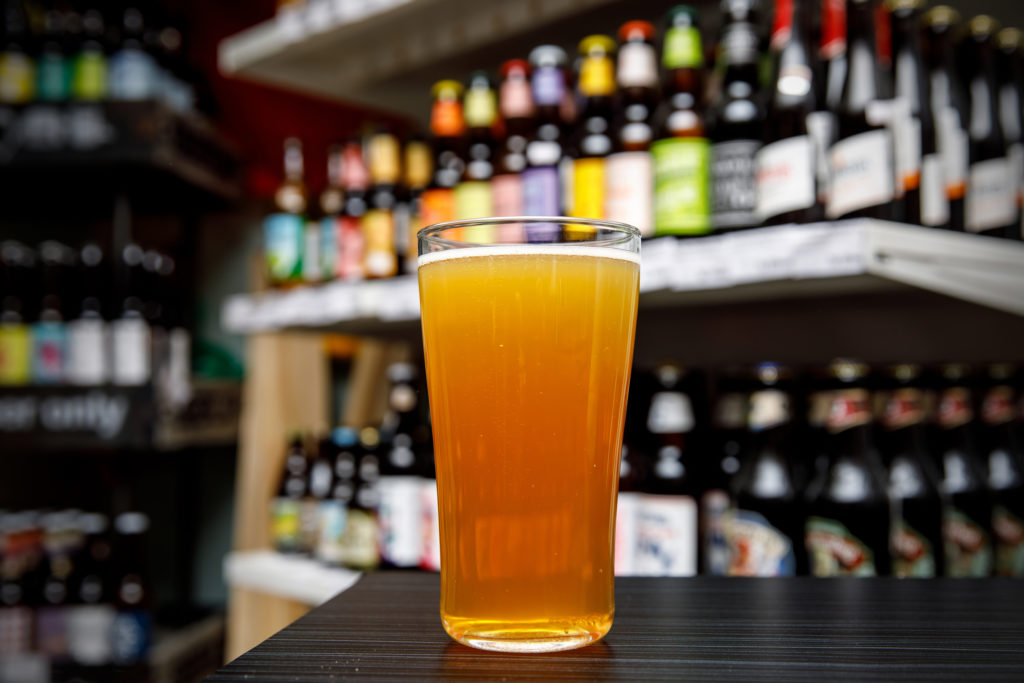
By: Erik Lars Myers
It’s the rallying cry of the craft beer fan: What’s freshest? What just went on tap? What haven’t I had before?
Today’s craft beer industry is a vast whirlwind of new. “Rotation nation” we call it, as we tuck our tried and true flagship recipes into the back of the filing cabinet and turn to search for the next new thing to wow the customer with. This industry, with over 10,000 breweries making hundreds of thousands of individual beers each year, is becoming more competitive than ever before. As each brewery fights for their individual slice of market share, it all comes back to that same question “Whaddya got that’s new?”
Weirdly, it’s an answer that our industry seems to struggle with. The hippest, most sought after breweries in the country are all really coloring from the same box of crayons – lactose laden juicy IPAs, pastry stouts, and fruited kettle sours. It’s the strategy at the forefront of the industry because it makes real money, particularly in a taproom setting selling the vast majority over the bar to customers who are willing to drop exorbitant amounts of money on a case of 16 oz cans. But at the end of the day, the answer to “Whaddya got that’s new?” right now in the industry really seems like, “Some more of the same.”
Certainly, the small side of the industry is making great strides in technical brewing. We’re reducing TPO and gaining shelf life on small, open air, 4-head canning lines in ways we’ve never been able to do before. But shelf stability isn’t innovation. Our largest macrobrewery competitors have had shelf stability down for decades and longer. We’ve got enzymes available that will cut down fermentation time, reduce diacetyl, promote and stabilize hop aroma, cut gluten chains, and create clear – or hazy! – beer. But buying new products from your chemical supplier can hardly be considered innovative. The suppliers are innovating. Our hop growers are creating new varieties to supply all of our customer’s wildest fruit flavored dreams. We’re the middlemen who put it into beer.
Most of the innovation in the industry in recent years really comes down to variations on the theme of IPA. American IPA, Black IPA, Brown IPA, Red IPA, White IPA, Imperial/Double IPA, New England-Style IPA, and the most recent brief experimentation, the Brut IPA.
For years, IPA has been the dominant style in the American market. Leaning on hops, and particularly fruit-forward and citrusy hops, was the defining differentiator for the American craft beer industry in its nascent years all the way through to current day. It is a story that doesn’t exist with any other ingredient available right now. Every other brewing culture in the world uses malt, water, and yeast and (basically) always has. But hops – the American craft beer industry has hops. And not just, “put it in to make your beer bitter” hops, but wide ranges of usage to create wide ranges of flavor hops.
No Wonder it’s Been Our Source of Innovation
The story of Brut IPA is a good snapshot of what innovation in the craft beer market looks like right now. A brewer – Kim Sturdavant of Social Kitchen and Brewery – had an idea. Use amyloglucosidase – an enzyme used in brewing to help increase saccharification in the mash, or to increase attenuation during fermentation – in a traditional IPA, dry it out as much as possible, build a hop bill that complimented the dry body and malt flavor profile instead of a sticky sweet one and, bam, a new style is born.
It’s a cool – yes, innovative – idea, and one that resulted in some delicious beer.
But also one that resulted in a mind-boggling range of other results. Shortly after Sturdavant made his Brut IPA, other breweries started jumping on the bandwagon – and why not? In an environment in which “new” is prized, being the first brewery around to make a new style, much less a new IPA, is going to draw some quick dollars, and so Brut IPAs began to pop up around the country with staggering speed. The only problem is that very few of the people making them had ever had one. Sure, it was easy enough to pop “Brut IPA” into Google, read a few articles, and probably find a thread or two in brewing forums describing how people were taking shots at it, but few worked from the source of the innovation, or even tried one before making one. Consumers were presented with a wide, inconsistent range of interpretations of what a “Brut IPA” meant from dry-bodied dank hazy beers, to crystal clear effervescent champagne-like beers, and as a collective style they largely faded from draft lineups as quickly as they appeared as consumers turned back toward what they knew they could count on.
“New England Style IPA” was arguably the last real true innovation in craft beer. It created something wholly new that the industry hadn’t seen before. Certainly, as it’s evolved, the only reason that we call it an IPA at all is that we don’t have another term for a beer that uses a lot of hops – but that’s the only resemblance it bears to IPA as a style. It lacks any sort of bitterness or clarity, and leans toward overripe tropical fruit flavors instead of the floral, citrus, woody, or dank characteristics that IPAs have exhibited for the known span of IPA history.
Think on this. The Alchemist’s “Heady Topper” was released 16 years ago. The prototypical example of a “New England IPA” that graces the draft lineup of almost every one of those 10,000 breweries in the country is older than 75% of those breweries and the brewers in them wearing “Make Beer Clear Again” hats. It was years before you could find this style outside of Vermont.
Since then, there have been years of experimentation and articles written about the virtues of the biotransformation of hop oils during fermentation. There have been whole books put together about the style that include topics like haze stability and how to increase fruit characteristics in dry hopping. Recently, the largest craft brewery in the country introduced one of its fastest growing SKUs, “Hazy Little Thing” as it finally jumped on the trend. Maybe Brut IPA will get there, but I suspect that, like its cousin the Black IPA, it will only see rare comebacks – a fad, not a trend.
It’s worth arguing that wild Belgian-style, spontaneous fermentation in America fits the same categorical differentiation in many ways, but focused on bacteria and yeast, rather than hops. And it’s true – coolships, foeders, and barrel rooms are being installed at breweries dotting American geography as brewers on this side of the Atlantic experiment with their own versions of spontaneously fermented ale and mixed culture fermentations. However, it’s worth noting that while these beers are being experimented upon and popularized by American brewers, they’re ultimately historic styles. As small brewers we’re mimicking the actions of those who have been there before us. Yes, we’re learning and improving, yes, that can definitely lead to innovation, but it is not (yet) innovation in itself.
The New Forefront of Innovation: Not Beer
It’s difficult to ignore hard seltzer’s impact upon the brewing industry. In 2019 seltzer exploded into a $1+ billion business and it immediately turned heads. Not only is it a substantial threat to shelf space and customer mind share, it delivers something that most breweries have a difficult time consistently delivering: a completely clean, completely clear beverage. That hasn’t stopped brewers from trying to emulate it, though – and that might ultimately be the basis of the industry’s problem with it.
For a moment, think through what hard seltzer is as a beverage: a fermented neutral base (either Clear Malt Base, Dextrose, or sometimes even Sucrose), blended with a flavor. While a brewery could use a fruit puree or real fruit additions to gain that flavor, fruit extracts are cheaper, easier, and don’t add pesky colors or haze. From a pure process standpoint, it’s about as far away from crafting a beer as you can imagine, and when your innovative take on a product means, “Make it taste like Dragonfruit instead of Lemon/Lime”, you know that you’re not making great new creative strides forward. Making hard seltzer is the latest in the trend of making a thing that tastes like a different thing. It’s a bubbly water with flavorless alcohol that tastes like a fruit – maybe two fruits!
That is ultimately the problem that craft beer faces – its fans have fallen down the rabbit hole of mimicry. We are actively helping our customers turn from beer. Those people who are standing in line at hype breweries for milkshake IPAs, pastry stouts, and fruited sours? They’re not really fans of beer. They’re fans of alcohol, and of things that taste like other things. It is the Imperial Stout that they’re a fan of? Or is it Butterfingers and Count Chocula? Are they really fans of the IPA or the fruited sour? Or do they like getting drunk while consuming something that tastes like juice?
Chasing these customers is a sound financial decision in the short term – but when those same fans turn from the rest of your products because they taste like beer instead of something else, then you’re ultimately undercutting the concept of a brewery – a beer factory – itself and opening the door to eventual obsolescence. When customer tastes shift from juice and candy bars to something else, hope against hope that the thing they shift to is “back to beer” or your future is limited.
Innovation in beer may be the only thing that brings these customers back – and it’s difficult to know what that looks like. Before the iPod was invented, only a small handful of people could imagine what that looked like. The next new innovation in the brewing industry – that whole new thing that brings people back to beer – could be in your head. It could be in your brewery right now, but we’ll never know if our industry continues to build and thrive upon mimicry.
Erik Lars Myers is an author, brewer, and lover of beer. He currently works as the Director of Brewing Operations at Fullsteam Brewery in Durham, NC where he strives toward innovation every day while supporting the Southern Beer Economy by using brewing ingredients sourced and grown across the American South.









